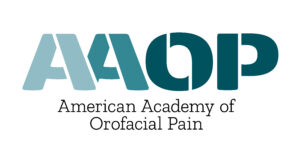46th Annual Scientific Meeting
“New Frontiers in Orofacial Pain, Headache, and Sleep: From The Bench to Clinical Care”
The Specialty of Orofacial Pain: An Evolutionary Journey –
Jeffrey Okeson, DMD
Dr. Okeson will present a review of his 47 years of teaching and practicing in the areas of occlusion, TMD and orofacial pain. He will reflect on his professional experiences as the specialty of orofacial pain matured from non-working contacts and slides to what it is today.
In January 2019, the United States National Academy of Medicine (NAM) initiated a 15-month comprehensive study of the current knowledge and clinical practices associated with temporomandibular disorders (TMDs). The 18 members of the Committee represented anesthesiology, behavioral medicine, dentistry, epidemiology, health care services and outcomes, law and health care, medicine, neurology, nursing, oral and maxillofacial surgery, biomechanics and orthopedics, pain medicine, patient advocacy, psychology, and temporomandibular disorders. The Academy conducts its activities with multiple layers of oversight in order to ensure objectivity and accountability. Within that oversight, this broad scientific group reviewed the available evidence and published an open-access Report on TMDs (National Academies, 2020). In the Recommendations within that Report, several roles for the AAOP, as a clinical specialty organization, are highlighted in order to address the identified problems in the field. This presentation will discuss those roles, particularly within the context of evidence-based medicine and the newly recognized status of the specialty of orofacial pain.
Learning objectives
1. Understand the importance of the NAM Report on TMDs to patients, the field, and the AAOP.
2. Recognize the opportunity for the AAOP to take a larger role in the orofacial pain field.
 Dr. Okeson is Professor and Dean of the University of Kentucky College of Dentistry. He founded in the College’s Orofacial Pain Program in 1977. Dr. Okeson has more than 240 publications in the area of occlusion, TM disorders and orofacial pain in addition to two textbooks Dr. Okeson is a very sought after lecturer on the subject of TMD and orofacial pain and has presented more than 1300 invited lectures on the subject of TMD and orofacial pain in all 50 states and in 59 different countries. He has received numerous teaching awards including “The International Dentist of the Year Award” from the Academy of Dentistry International. This is the highest award recognized by this Academy and was given to him in recognition of his worldwide efforts in providing education in the area of temporomandibular disorders and orofacial pain.
Dr. Okeson is Professor and Dean of the University of Kentucky College of Dentistry. He founded in the College’s Orofacial Pain Program in 1977. Dr. Okeson has more than 240 publications in the area of occlusion, TM disorders and orofacial pain in addition to two textbooks Dr. Okeson is a very sought after lecturer on the subject of TMD and orofacial pain and has presented more than 1300 invited lectures on the subject of TMD and orofacial pain in all 50 states and in 59 different countries. He has received numerous teaching awards including “The International Dentist of the Year Award” from the Academy of Dentistry International. This is the highest award recognized by this Academy and was given to him in recognition of his worldwide efforts in providing education in the area of temporomandibular disorders and orofacial pain.
Diagnosis, Computational Phenotypes and Pre-Clinical Rounds for the OFP Specialist – Glenn Clark, DDS, MS
This lecture reviews 3 topics, diagnosis and misdiagnosis, computational phenotypes and teaching OFP to residents. The first section discusses the Institute of Medicine 2015 report which highlighted that physician diagnostic error. It discusses some of the issues underlying these errors, specifically that as an OFP expert you must know and be able to recognize over 100 different disease, disorder and dysfunctions.
The second part of the lecture discusses the topic of why we need a low click burden, but highly coded EMR with smarttext tools to create a database which allows computational phenotyping for the diseases we must contend with. The lecture discusses how computational phenotypes are the beginning but eventually you will want to look for diagnostic subsets. These subsets might occur because there is a different mechanism for the diagnosis.
The third part of the lecture focuses on how pre-clinical rounds help residents learn and demonstrate their current level of knowledge to the faculty. Pre-clinical rounds, especially those that take the issue of evidence based treatment seriously, are critically important because they allow a calibration of the resident and the attending faculty who are teaching in a clinic setting. Finally the lecture suggests how private clinicians can organize study clubs to further their knowledge using weekly zoom-based rounds with other OFP practitioners.
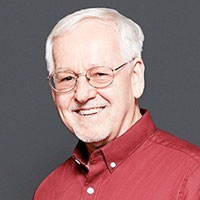 Dr. Glenn Clark is a currently full Professor in the Division of Diagnostic Sciences at the Ostrow School of Dentistry of USC and Associate Dean of Distance Education and Telehealth. He is Director of the Orofacial Pain and Oral Medicine Center, Director of the Orofacial Pain and Oral Medicine 3-year Master’s Degree. Dr. Clark is Co-Director of the 3 year Master’s Degree in Pain Medicine. Dr. Clark is Co-Director of the 1 year certificate in Orofacial Pain at Trinity College Dublin and a Visiting International Professor at Trinity. Dr. Clark’s academic career began at UCLA and he held various administrative posts including Director of the Clinical Research Center, Director of the Dental Research Institute and Associate Dean of Research.
Dr. Glenn Clark is a currently full Professor in the Division of Diagnostic Sciences at the Ostrow School of Dentistry of USC and Associate Dean of Distance Education and Telehealth. He is Director of the Orofacial Pain and Oral Medicine Center, Director of the Orofacial Pain and Oral Medicine 3-year Master’s Degree. Dr. Clark is Co-Director of the 3 year Master’s Degree in Pain Medicine. Dr. Clark is Co-Director of the 1 year certificate in Orofacial Pain at Trinity College Dublin and a Visiting International Professor at Trinity. Dr. Clark’s academic career began at UCLA and he held various administrative posts including Director of the Clinical Research Center, Director of the Dental Research Institute and Associate Dean of Research.
Dr. Clark began his research work focusing on both temporomandibular disorders and trigeminal motor function and dysfunction including bruxism, dystonia, and chronic myofascial pain disorders of the jaw system. In 1986 Dr. Clark’s expanded his research work to include studies on the diagnosis and treatment of Obstructive Sleep Apnea. This work has involved him as Principal Investigator on several National Institute for Dental Research grants. Dr. Clark has written over 225 research articles, review papers, or chapters in textbooks. He has served as editor or co-editor of five books on Temporomandibular Problems and on Diagnostic and Surgical Arthroscopy. His most recent book is title Orofacial Pain: A guide to medications and management and is published by Wiley-Blackwell Inc. He has been granted membership as a Diplomat of the American Board of Orofacial Pain; he was voted alumnus of the Year of the UCLA School of Dentistry (1990). Dr. Clark was given the Pierre Robin Award for Academic Excellence (2001) by the Academy of Dental Sleep Medicine and in 2004 he was awarded honorary fellowship in the American Academy of Oral Medicine. In 2005 he was given a lifetime achievement award by the American Academy of Orofacial Pain. Finally, he was given the USC Mentoring Award by the University Provost in 2018.
Evidenced-Based Advancements in TMD Management
Gary Klasser, DMD
During the last several decades there has been an explosion in evidence-based scientific discovery and knowledge regarding the diagnosis and management of temporomandibular disorders (TMD). This presentation will concentrate on reviewing the more recent scientific literature as it relates to TMD management. This will ultimately assist the oral health care practitioner in deciding as to what is the most contemporary evidence-based care they can provide for their TMD patients.
Learning objectives
1. To gain an appreciation for the scientific method in exploring evidence-based literature
2. To understand previous management strategies and interventions for TMD
3. To learn about evidence-based advancements for TMD management
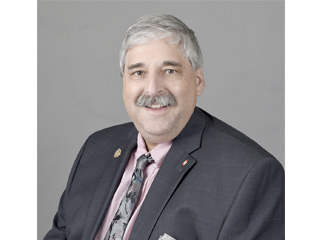 Dr. Gary D. Klasser obtained his dental degree from the University of Manitoba (Canada) in 1980. Over the next 22 years, he enjoyed the practice of general dentistry from both a public health and private practice perspective until he returned to graduate studies in 2002. In 2004, he completed his training and graduated from the University of Kentucky with a Certificate in Orofacial Pain.
Dr. Gary D. Klasser obtained his dental degree from the University of Manitoba (Canada) in 1980. Over the next 22 years, he enjoyed the practice of general dentistry from both a public health and private practice perspective until he returned to graduate studies in 2002. In 2004, he completed his training and graduated from the University of Kentucky with a Certificate in Orofacial Pain.
In 2005, he completed a fellowship in Oral Medicine/Oral Oncology at the University of Illinois at Chicago (UIC). From 2005 – 2011, he was an Assistant Professor and Director of the Oral Medicine/Orofacial Pain clinic at the College of Dentistry in the University of Illinois
at Chicago. Currently, he is a Professor in the Department of Diagnostic Sciences at Louisiana State University, School of Dentistry as well as the Director of the LSU Orofacial Pain Continuum. Dr. Klasser has published numerous peer reviewed scientific articles while contributing many chapters to various textbooks. He also serves as an associate editor or as an editorial reviewer for a number of journals. He is also co-editor of several textbooks related to oral and facial pain and is a Past-President of the American Academy of Orofacial Pain.
The Importance of The Nervous System – Digestive System Connection in OFP –
Paul Durham, MS, PhD
There is strong evidence to support the notion that a healthy digestive system promotes a healthy nervous system while an unhealthy digestive system is associated with systemic inflammation and chronic pain conditions.
For example, the higher comorbid association of TMD and migraine with irritable bowel syndrome. Clearly there exists a bidirectional relationship between our nervous and digestive systems that has important implications for understanding the underlying pathology and managing a chronic pain patient. The commensal bacteria that reside in our digestive tract play a key role in regulating the sensitivity state of our nervous system via the synthesis and release of anti-inflammatory molecules such as short chain fatty acids and the neurotransmitters 5-HT and GABA that modulate neuronal excitability.
During my presentation, I will discuss the negative effects of chronic unmanaged stress and anxiety, and poor dietary choices on the nervous and digestive systems and how these common comorbid conditions promote changes in the bacterial composition in our oral cavity and gastrointestinal tract. Of clinical relevance, I will discuss the importance of a healthy diet in providing nutrition for our cells and also for the commensal bacterial cells that reside in our digestive system and generate metabolites to suppress the development of a sensitized trigeminal system characteristic of migraine, TMD, and other orofacial pain conditions.
Learning objectives:
1. Know how we acquire our oral and gut bacterial populations and why maintenance of a diverse microbiota is key to restoring and maintaining a healthy digestive and nervous system.
2. Understand the bidirectional nature between the digestive and nervous systems and how chronic stress and anxiety lead to dysfunction by altering the HPA-stress axis and bacterial composition in our oral cavity and gastrointestinal tract.
3. Describe the essential role of gut bacteria that produce anti-inflammatory molecules such as short chain fatty acids and the neurotransmitters 5-HT and GABA in modulating the excitability state of our digestive and nervous systems.
4. Appreciate the importance of a prudent diet that provides nutrients for our own cells and the commensal bacterial cells that live in our digestive tract and be able to identify foods that act as prebiotics to help support a healthy bacterial population.
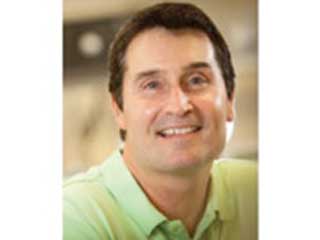 Paul L. Durham, PhD, is Distinguished Professor of Cell Biology at Missouri State University and Director of its Center for Biomedical and Life Sciences, a multidisciplinary laboratory utilizing cellular/molecular, microbiological, biochemical, and chemical techniques. A major focus of his research has been to elucidate the cellular/molecular mechanisms by which novel drugs and nutraceuticals modulate the excitability state of neurons and glial cells under pathological conditions.
Paul L. Durham, PhD, is Distinguished Professor of Cell Biology at Missouri State University and Director of its Center for Biomedical and Life Sciences, a multidisciplinary laboratory utilizing cellular/molecular, microbiological, biochemical, and chemical techniques. A major focus of his research has been to elucidate the cellular/molecular mechanisms by which novel drugs and nutraceuticals modulate the excitability state of neurons and glial cells under pathological conditions.
More recently, his laboratory has been investigating epigenetic changes in response to changes in diet, sleep pattern, early life stress, and chronic inflammation. Another focus has been on understanding the mechanism of action by which non-invasive vagus nerve stimulation modulates the excitability state of neurons and glia in episodic and chronic models of migraine and TMD. A frequently invited guest lecturer and the author of > 80 peer-reviewed research articles and > 130 published abstracts. Dr. Durham has served on numerous NIH study sections and pharmaceutical company advisory boards and is currently a reviewer for more than 10 journals. Dr. Durham is a member of the Society for Neuroscience, American Headache Society, American Pain Society, and American Academy of Orofacial Pain
The Brain Circuitry Supporting Pain Catastrphizingin Chronic Pain: A Functional MRI Approach –
Vitaly Napadow, PhD
Pain catastrophizing is a critically important psychosocial factor that adversely impacts the trajectory of many chronic pain conditions. This presentation will explore the nature of pain catastrophizing and the neurophysiological mechanisms by which it exerts its effects. Functional neuroimaging research has demonstrated that pain catastrophizing influences brain response to evoked pain stimuli and also modulates the functional brain connectivity encoding clinical pain. We have applied a novel neuroimaging paradigm to determine the brain regions underlying pain catastrophizing and will introduce a neural model for how pain catastrophizing influences brain connectivity and chronic pain / hyperalgesia.
Specifically, the brain is composed of multiple primary sensory and associative networks that activate and deactivate (fluctuate) as distinct assemblies and become blurred when pain-associated activation of specific network nodes (e.g. posterior cingulate cortex) is maintained. Our data suggests that pain catastrophizing reflects a highly focused interoceptive state which activates ventral posterior cingulate cortex leading to cross-network blurring and worsening of clinical pain and accompanied hyperalgesia and evoked pain sensitivity. Thus, pain catastrophizing has a distinct neurophysiological impact on the brain circuitries processing the clinical pain experience.
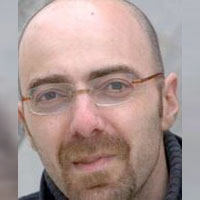 Vitaly Napadow is a Professor at Harvard Medical School and the Director of the Scott Schoen and Nancy Adams Discovery Center for Recovery from Chronic Pain at Spaulding Rehabilitation Hospital and the Center for Integrative Pain Neuroimaging (CiPNI) at the Martinos Center for Biomedical Imaging at Massachusetts General Hospital. Somatosensory, cognitive, and affective factors all influence the malleable experience of chronic pain, and Dr. Napadow’s Lab has applied human functional and structural neuroimaging to localize and suggest mechanisms by which different brain circuitries modulate pain perception. Dr. Napadow’s neuroimaging research also aims to better understand how non-pharmacological therapies, from acupuncture and transcutaneous neuromodulation to cognitive behavioral therapy and mindfulness meditation training, ameliorate aversive perceptual states such as pain. Dr. Napadow has more than 200 publications in leading peer-reviewed scientific journals, is past-President of the Society for Acupuncture Research, and serves on the board of the US Association for the Study of Pain (USASP) and numerous conference, journal, and NIH review panels. He was recently named to the Academy Distinguished Investigator Council by the Academy for Radiology & Biomedical Imaging Research and received the Excellence in Integrative Medicine Research Award by the European Society for Integrative Medicine.
Vitaly Napadow is a Professor at Harvard Medical School and the Director of the Scott Schoen and Nancy Adams Discovery Center for Recovery from Chronic Pain at Spaulding Rehabilitation Hospital and the Center for Integrative Pain Neuroimaging (CiPNI) at the Martinos Center for Biomedical Imaging at Massachusetts General Hospital. Somatosensory, cognitive, and affective factors all influence the malleable experience of chronic pain, and Dr. Napadow’s Lab has applied human functional and structural neuroimaging to localize and suggest mechanisms by which different brain circuitries modulate pain perception. Dr. Napadow’s neuroimaging research also aims to better understand how non-pharmacological therapies, from acupuncture and transcutaneous neuromodulation to cognitive behavioral therapy and mindfulness meditation training, ameliorate aversive perceptual states such as pain. Dr. Napadow has more than 200 publications in leading peer-reviewed scientific journals, is past-President of the Society for Acupuncture Research, and serves on the board of the US Association for the Study of Pain (USASP) and numerous conference, journal, and NIH review panels. He was recently named to the Academy Distinguished Investigator Council by the Academy for Radiology & Biomedical Imaging Research and received the Excellence in Integrative Medicine Research Award by the European Society for Integrative Medicine.
Diagnosis and Management of Idiopathic Condylar Resorption and Junvenile Idopathic Arthritis –
Leonard Kaban, DMD, MD, FACS
In this lecture diagnosis and management of idiopathic condylar resorption (ICR) and juvenile idiopathic arthritis (JIA) will be discussed. Particular attention will be paid to the etiology, pathophysiology, clinical findings, diagnostic methods including imaging, treatment algorithms and outcomes for both conditions. In addition, the differential diagnosis and overlap in findings between myofascial pain (TMD), ICR and JIA will be explored.
Learning objectives
At the end of this lecture the audience will be familiar with:
1. Definitions and criteria for diagnosis of ICR and JIA
2. Differential diagnosis and overlap of findings between the two conditions
3. Distinction between TMD, ICR and TMJ only JIA
4. Imaging techniques for diagnosis of ICR and JIA
5. Natural history of ICR and JIA
6. Treatment algorithms for ICR and JIA
7. Outcomes and long-term follow-up
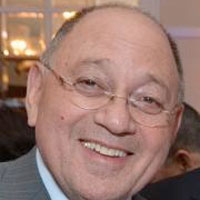 Leonard B. Kaban is the Walter C. Guralnick Distinguished Professor and Chief, Emeritus of Oral and Maxillofacial Surgery at Harvard and Massachusetts General Hospital. Dr. Kaban is the author or co-author of 5 books and over 375 original papers on such topics as hemifacial microsomia, jaw tumors in children, vascular anomalies, fibrous dysplasia, reconstructive surgery and facial trauma in children.
Leonard B. Kaban is the Walter C. Guralnick Distinguished Professor and Chief, Emeritus of Oral and Maxillofacial Surgery at Harvard and Massachusetts General Hospital. Dr. Kaban is the author or co-author of 5 books and over 375 original papers on such topics as hemifacial microsomia, jaw tumors in children, vascular anomalies, fibrous dysplasia, reconstructive surgery and facial trauma in children.
Dr. Kaban received his Bachelor of Arts degree (cum laude) from Queens College of the City University of NY in 1965, his DMD (cum laude) from the Harvard School of Dental Medicine (HSDM) in 1969, his MD degree from Harvard Medical School in 1973 and completed the Oral and Maxillofacial Surgery (OMFS) Residency Program at the Massachusetts General Hospital in 1974. After training, Kaban joined the staff of the then Peter Bent Brigham Hospital and Boston Children’s Hospital as the first full time pediatric oral and maxillofacial surgeon. In 1985, he accepted the position of Professor and Chairman of the Department of Oral and Maxillofacial Surgery at the University of California, San Francisco. He returned to Boston in January 1994 as the Walter C. Guralnick Professor and Chairman of the Department of Oral & Maxillofacial Surgery at Harvard and the Massachusetts General Hospital. He stepped down as Chair, in 2015, after serving for 22 years.
He has received the Research Recognition Award (1992) and the Daniel B. Osborn Award for Outstanding Educators (2004) from the American Association of Oral and Maxillofacial Surgeons. In 2007, he received the Norman Rowe Medal and delivered the Norman Rowe address to the British and American Associations of Oral and Maxillofacial Surgery joint meeting in Scotland. In October 2011, Dr. Kaban received the Norton M. Ross Award for Excellence in Clinical Research from the American Dental Association. In October 2017, Dr. Kaban received the American Association of Oral & Maxillofacial Surgeons Clinical Research Award recognizing his innovative and significant contributions to the field over the past 40 years. Also, in 2017, the Leonard B. Kaban, DMD, MD Chair in Pediatric Oral and Maxillofacial Surgery was established at Boston Children’s Hospital.
Platelet-Rich Plasma and Stem Cell Therapy in The Management of TMD –
Antonia Teruel Castellon, DMD, MS, PhD
In this presentation, the best available clinical evidence on the clinical application and therapeutic efficacy of platelet-rich plasma (PRP) and stem cell in the management of temporomandibular disorders (TMD) will be discussed.
Objectives:
1. Describe the contents and biological mechanisms of PRP and stem cell therapy in the management of TMD.
2. Discuss the current clinical indications of PRP and stem cell therapy in the management of TMD.
3. Review the best available scientific evidence on the therapeutic use of PRP and stem cell therapy in the management of TMD.
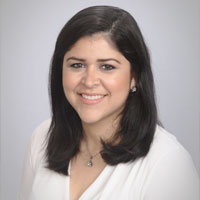 Dr. Antonia Teruel is a Diplomate of the American Board of Orofacial Pain. She earned her dental degree in 2001 in Brazil, a master’s degree in 2003 and a PhD in 2006, both from UCLA. In 2008 she completed residencies in the specialties of Oral Medicine & Orofacial Pain. She has vast teaching experience and has served as an Assistant Professor at the Ostrow School of Dentistry of USC, University of Pittsburgh School of Dental Medicine, and at A.T. Still University the Arizona School of Dentistry & Oral Health. She has published several original articles and book chapters in her areas of expertise. Dr. Teruel works full-time as an Orofacial Pain specialist at the Head Pain Institute.
Dr. Antonia Teruel is a Diplomate of the American Board of Orofacial Pain. She earned her dental degree in 2001 in Brazil, a master’s degree in 2003 and a PhD in 2006, both from UCLA. In 2008 she completed residencies in the specialties of Oral Medicine & Orofacial Pain. She has vast teaching experience and has served as an Assistant Professor at the Ostrow School of Dentistry of USC, University of Pittsburgh School of Dental Medicine, and at A.T. Still University the Arizona School of Dentistry & Oral Health. She has published several original articles and book chapters in her areas of expertise. Dr. Teruel works full-time as an Orofacial Pain specialist at the Head Pain Institute.
Orthopedic Principles & the Role of Arthroscopy in the Diagnosis and Management of Temporomandibular Joint Arthropathies – Joseph McCain, DMD, FACS
In this comprehensive lecture, Dr. McCain will provide the audience with his current approach to diagnosis and management of arthropathies, based on his 40 year perspective. The audience can expect to be both entertained and informed during Dr. McCain’s oration of his orthopedic approach to TMJ arthropathies, accompanied by stunning arthroscopic visuals. Dr. McCain uses arthroscopic images and visuals to highlight the diagnostic information and operative maneuvers possible, during arthroscopy of the TMJ.
Learning Objectives:
The history and evolution of TMJ Arthroscopy as a minimally invasive surgical option to diagnose and treat orthopedic problems
Joint Dynamics: Conceptualizing physiologic and pathologic movements during TMJ function
Understanding of the etiology and progression of diseases of the synovial membrane and articular cartilages
Discover the diagnostic information that can be gain, and operative maneuvers that are possible, during TMJ Arthroscopy
Comprehension of the goals of arthroscopy, leading to earlier surgical referrals for evaluation of orthopedic problems of the TMJ
Increased advocacy for establishment of a definitive diagnosis utilizing minimally invasive procedures, like Arthroscopy.
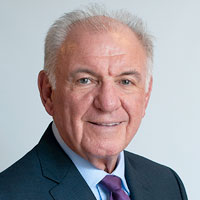 Dr. Joseph McCain is a Board Certified Oral and Maxillofacial Surgeon and Fellow of the American College of Surgery. He completed his undergraduate and Dental School education at the University of Pittsburgh. Residency training in OMFS was completed at the University of Miami, Jackson Memorial Hospital. Dr. McCain was the Founder of Miami Oral and Maxillofacial Surgery, a hybrid academic private practice that focused on patient care, graduate medical education, and clinical research.
Dr. Joseph McCain is a Board Certified Oral and Maxillofacial Surgeon and Fellow of the American College of Surgery. He completed his undergraduate and Dental School education at the University of Pittsburgh. Residency training in OMFS was completed at the University of Miami, Jackson Memorial Hospital. Dr. McCain was the Founder of Miami Oral and Maxillofacial Surgery, a hybrid academic private practice that focused on patient care, graduate medical education, and clinical research.
He has previously served as Chief of OMFS of the Baptist Health System in Miami, OMFS Program Director at Nova Southeastern School of Dental Medicine, professor and Chairman of the OMFS section of Florida International University School of Medicine, and the President of the American Society of TMJ Surgeons.
Dr. McCain’s specialty focused interests include Minimally-Invasive TMJ and Endoscopic Maxillofacial Surgery. Dr. McCain has published, lectured, and operated both nationally and internationally regarding this field of specialized surgery. Dr. McCain joined the Harvard/MGH Family as a full-time faculty in the Department of OMFS in 2018, to start a fellowship program in Endoscopic Maxillofacial Surgery. Currently he is the Program Director of the Endoscopic Maxillofacial Surgery Fellowship at Massachusetts General Hospital, a full-time Attending Surgeon at Massachusetts General Hospital, and an Associate Professor of OMFS at the Harvard Medical School and Harvard School of Dental Medicine.
Psychosocial Assessment in Clinical Practice –
Corine Visscher, PT, MSc, PhD, CCTT
Nowadays, a dual-axis approach is widely accepted in the management of patients with chronic pain. In the Diagnostic Criteria for Temporomandibular Disorders (DC/TMD) various tools for the assessment of psychosocial factors are offered. In this lecture, an overview of the literature about Axis II assessment relevant for the general oral health practitioner is discussed. These include a pain drawing, the Patient Health Questionnaire (PHQ-4), and the Graded Chronic Pain Scale (GCPS). Moreover, recommendations for implementation of these screening tools in the dental practice and interpretation of the outcomes for tailored treatment decisions are provided.
After the lecture, participants:
– Have updated their knowledge on the scientific evidence for psychosocial assessment in orofacial pain patients
– Know which screening tools for psychosocial assessment can be implemented in dental practice
– Are able to interpret the outcomes of the screening tools for psychosocial assessment
 Prof. Dr. Corine M. Visscher is a professor at the department of Orofacial Pain and Dysfunction (OPD), and director of the dental school, both at the Academic Centre of Dentistry Amsterdam (ACTA). Her research and clinical interests have focused on chronic pain patients, TMD and headache. At the OPD department, she works in a multidisciplinary team, that consists of specialized dentists, physical therapists and a psychologist. She graduated in 1994 as a physical therapist at Polytechnics Amsterdam, Faculty of Healthcare, Department of Physical Therapy. In 2000, she obtained her PhD at the University of Amsterdam, the Netherlands. In 2005, she received her Master degree in Epidemiology at the VU University Medical Center in Amsterdam.
Prof. Dr. Corine M. Visscher is a professor at the department of Orofacial Pain and Dysfunction (OPD), and director of the dental school, both at the Academic Centre of Dentistry Amsterdam (ACTA). Her research and clinical interests have focused on chronic pain patients, TMD and headache. At the OPD department, she works in a multidisciplinary team, that consists of specialized dentists, physical therapists and a psychologist. She graduated in 1994 as a physical therapist at Polytechnics Amsterdam, Faculty of Healthcare, Department of Physical Therapy. In 2000, she obtained her PhD at the University of Amsterdam, the Netherlands. In 2005, she received her Master degree in Epidemiology at the VU University Medical Center in Amsterdam.
Dr. Visscher published over 70 papers in peer-reviewed international journals. She is one of the authors of the latest edition of the guidelines of the American Academy of Orofacial Pain (AAOP), and a member of the Physical Therapy Board of Craniofacial and Cervical Therapeutics (PTBCCT). In addition, she was involved in the International Consensus Workshop that has introduced the Diagnostic Criteria for TMD (DC/TMD).
Clinical Reasoning and Decision Making in The Management of Patients with Myofascial Pain –
Michelle Finnegan, PT, DPT, OCS, MTC, CMTPT, CCTT, FAAOMPT
This session will cover clinical reasoning as it relates to the examination and treatment of patients with orofacial pain of myofascial origin. Pitfalls in the clinical reasoning process will be covered as well as muscle pain mechanisms. A patient case will be covered for integration of the material and concepts.
Learning objectives:
1. Discuss common pitfalls in the clinical reasoning process of patients with orofacial myofascial pain.
2. Explain mechanisms of muscle pain and dysfunction in the orofacial region.
3. Adapt concepts from the patient case into their own knowledge base for improved evidence-based practice.
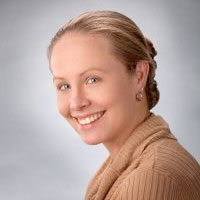 Dr. Michelle Finnegan has been a physical therapist for 20 years and specializing in treating patients with orofacial pain and chronic pain for 14 years. She is a board-certified clinical specialist in orthopedics through the American Board of Physical Therapy Specialties, a certified cervical and temporomandibular therapist by Physical Therapy Board of Craniofacial & Cervical Therapeutics, and a fellowship trained in manual therapy through the American Academy of Orthopedic Manual Physical Therapists.
Dr. Michelle Finnegan has been a physical therapist for 20 years and specializing in treating patients with orofacial pain and chronic pain for 14 years. She is a board-certified clinical specialist in orthopedics through the American Board of Physical Therapy Specialties, a certified cervical and temporomandibular therapist by Physical Therapy Board of Craniofacial & Cervical Therapeutics, and a fellowship trained in manual therapy through the American Academy of Orthopedic Manual Physical Therapists.
Dr. Finnegan is a senior instructor for the dry needing course series with Myopain Seminars and adjunct faculty for The George Washington University and South College Physical Therapy programs. She served on the editorial board for the 3rd edition of Travell, Simons & Simons’ Myofascial Pain and Dysfunction-the Trigger Point Manual, where she also co-authored multiple chapters. She has also been a co-author for several publications on dry needling and has presented at both state and national conferences on dry needling, myofascial pain, and upper quarter musculoskeletal conditions. Currently she is pursuing a PhD in Health Professions Education at the University of Maryland.
Migraine Pathophysiology and New Pharmacological Approaches in Headache Medicine –
Andy Charles, MD, FAHS MD, FAHS
Advances in the understanding of the pathophysiology of migraine have led to the identification of potentially important new therapeutic targets. This lecture will review therapeutic targets that have been identified based upon studies of the anatomy, physiology, and pharmacology of migraine. The hypothalamus, upper cervical nerve roots, peptides and their receptors, glutamate receptors, and sodium and potassium channels as therapeutic targets will be discussed among others. The new targets will be discussed in the context of currently available therapies, with a focus on strategies to optimize clinical management of migraine.
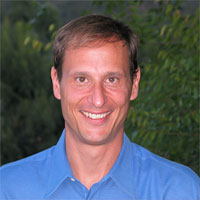 Andrew C. Charles, MD, is a Professor of Neurology and the Meyer and Renee Luskin Chair in Migraine and Headache Studies at the UCLA David Geffen School of Medicine. As Director of the UCLA Goldberg Migraine Program (previously known as the UCLA Headache Research and Treatment program), Dr Charles leads a multidisciplinary program that includes basic and clinical research, education, and care of patients with headache disorders. He has mentored numerous national and international clinicians and scientist in the field of headache medicine. His laboratory focuses on cellular and pharmacological mechanisms of migraine and pain, with a particular interest in the development of novel therapies. He has published widely on basic and clinical aspects of migraine and pain and lectures national and internationally on these topics. He is an Associate Editor of Cephalalgia and has served on the Board of Trustees of the International Headache Society.
Andrew C. Charles, MD, is a Professor of Neurology and the Meyer and Renee Luskin Chair in Migraine and Headache Studies at the UCLA David Geffen School of Medicine. As Director of the UCLA Goldberg Migraine Program (previously known as the UCLA Headache Research and Treatment program), Dr Charles leads a multidisciplinary program that includes basic and clinical research, education, and care of patients with headache disorders. He has mentored numerous national and international clinicians and scientist in the field of headache medicine. His laboratory focuses on cellular and pharmacological mechanisms of migraine and pain, with a particular interest in the development of novel therapies. He has published widely on basic and clinical aspects of migraine and pain and lectures national and internationally on these topics. He is an Associate Editor of Cephalalgia and has served on the Board of Trustees of the International Headache Society.
Dr. Charles is also the president-elect of the American Headache Society.
Co-Morbidity of Migraine and Temporomandibular Disorders: From the Clinical Side to The Bench –
Simon Akerman, PhD, FAHSPhD, FAHS
Migraine is one of the most prevalent headache disorders in the TMD population. This lecture will discuss the significance of this clinical co-morbidity and highlight the need for a better understanding of its underlying mechanisms to support evidence based novel treatments. The most recent published and unpublished preclinical studies will be presented, supporting recent advances in our understanding of the neural and molecular mechanisms involved. Several potentially novel avenues for treatment of this comorbidity will be highlighted, supported by preclinical studies.
Learning objectives:
1. be able to describe the phenotypic features of the comorbidity of migraine and TMD.
2. be able to describe several preclinical approaches to study this comorbidity, and based on these animal models, understand the potential neural mechanisms that mediate the exacerbated phenotype of the comorbidity of migraine and TMD.
3. be able to describe several potential underlying molecular mechanisms for this comorbidity and as a result describe several novel approaches that might be used to target these mechanisms as a treatment approach.
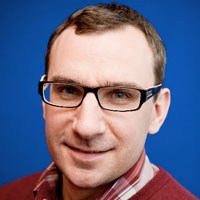 Dr. Simon Akerman received academic training at the University of Birmingham (BSc with honours in Psychology) and Institute of Psychiatry, University of London (MSc in Neuroscience). He completed his PhD studies at the Institute of Neurology, University College London (UCL) in Neurological Sciences in 2003, investigating the pathophysiological mechanisms related to primary headache disorders, under the supervision of Dr. Peter J. Goadsby. He completed postdoctoral research studies in primary headache disorders at UCL and the University of California, San Francisco.
Dr. Simon Akerman received academic training at the University of Birmingham (BSc with honours in Psychology) and Institute of Psychiatry, University of London (MSc in Neuroscience). He completed his PhD studies at the Institute of Neurology, University College London (UCL) in Neurological Sciences in 2003, investigating the pathophysiological mechanisms related to primary headache disorders, under the supervision of Dr. Peter J. Goadsby. He completed postdoctoral research studies in primary headache disorders at UCL and the University of California, San Francisco.
Prior to becoming a full-time academic as faculty in 2011 he was a Senior Scientist at Eli Lilly in their Pain and Migraine research program. He has been the recipient of various awards for his research efforts, including the 2009 AHS Harold G. Wolff lecture award and the 2012 AAN Wolff-Graham Award, and he is a Fellow of the American Headache Society.
Dr. Akerman has also served as a regular grant reviewer for various national funding bodies including the DoD in the US and MRC in the UK. His major research interests continue to focus on the basic neural mechanisms related to primary headache disorders, including migraine and cluster headache, migraine co-morbidities such as with orofacial pain disorders, and the identification of novel treatment targets to treat these debilitating pain conditions.
Headache Diagnosis and Management in the Orofacial Pain Setting –
Marcela Romero Reyes, DDS, PhD, FAHS
The understanding of neurovascular disorders and headache education for the orofacial pain practitioner is of fundamental importance. Sometimes, we may be the first practitioner that the headache patient might see and be able to deliver the correct diagnosis, therefore it is crucial to recognize red flags to identify if the headache is primary or secondary. More practitioners are aware of the comorbidity of migraine and TMD and its clinical implications, but also, it is vital to recognize that primary headache disorders may be localized in the orofacial region, resembling orofacial pains as a sole presentation.
Learning objectives:
1. Attendees will be able to understand the interrelated anatomy and physiology of headache and orofacial pains.
2. Attendees will be aware of the red flags to determine if a headache is primary or secondary
3. Attendees will be able to identify primary headache disorders resembling orofacial pains.
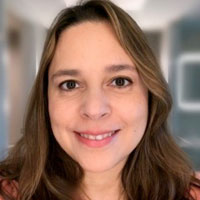 Dr. Marcela Romero Reyes is an associate clinical professor and Director of the Brotman Facial Pain Clinic at the Department of Neural and Pain Sciences at the University of Maryland, School of Dentistry. She is a nationally and internationally recognized expert in the fields of orofacial pain and headache disorders.
Dr. Marcela Romero Reyes is an associate clinical professor and Director of the Brotman Facial Pain Clinic at the Department of Neural and Pain Sciences at the University of Maryland, School of Dentistry. She is a nationally and internationally recognized expert in the fields of orofacial pain and headache disorders.
Dr. Romero graduated in 1999 from the School of Dentistry at the National Autonomous University of Mexico (UNAM). In 2006, she obtained her PhD in Oral biology and Orofacial Pain and Dysfunction certificate at UCLA, School of Dentistry. After this, she pursued postdoctoral training in neuroscience with a focus in primary headaches at the UCLA Headache Research and Treatment Program now known as the Goldberg Migraine Program in the department of Neurology, David Geffen, School of Medicine. Dr. Romero is an NIDCR, DoD and industry funded researcher. Her research involves the study of neuro-immune and nitroxidative mechanisms in orofacial pain, the discovery of new targets for the management of TMD, trigeminal neuropathic pains and headache and their translation to the clinical setting, in addition to non-pharmacological approaches of management. She is a Diplomate of the American Board of Orofacial Pain, Fellow of the American Academy of Orofacial Pain and fellow of the American Headache Society. She currently serves as the chair of the special section of TMD, Cervical Spine and Orofacial Pain of the American Headache Society and the AAOP Liaison to the AHS.
Red Flags and Diagnostic Pearls and Pitfalls in Headache Disorders: Clinical Case-Based Session – Jan Hoffmann, MD, PhD
The presentation will highlight in a case-based approach the difficulties that the treating physician may encounter in the diagnostic workup of headache disorders. It will cover in particular those cases in which there is an overlap between different specialties that would require a multidisciplinary approach. The presentation will also address some practical aspects that may support the process of finding the correct diagnosis.
 Dr. Jan Hoffmann is a Clinical Senior Lecturer and Honorary Consultant in Neurology at the Institute of Psychiatry, Psychology & Neuroscience at King’s College London.
Dr. Jan Hoffmann is a Clinical Senior Lecturer and Honorary Consultant in Neurology at the Institute of Psychiatry, Psychology & Neuroscience at King’s College London.
He graduated at Charité – Universitätsmedizin Berlin (Germany) where he also obtained his doctoral degree. Following a postdoctoral fellowship at the University of California San Francisco (USA) he worked at the University Medical Center in Hamburg-Eppendorf (Germany) before he relocated to London to his current position.
At King’s College London he leads a translational research group that focuses on the molecular mechanisms and central pain processing of headache and facial pain syndromes and conducts specialised headache and multidisciplinary facial pain clinics.
He is a member of the Board of Trustees and of the Science and Research Committee of the International Headache Society as well as a Council Member and Treasurer of the British Association for the Study of Headache.
He serves as an Associate Editor for Cephalalgia, Cephalalgia Reports, Journal of Oral & Facial Pain and Headache as well as for Frontiers in Pain Research.
Understanding Trigeminal Neuropathic Pain: Persistent Non-Odontogenic Tooth Pain – Donald Nixdorf, DDS, MS
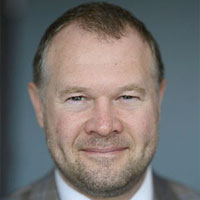 After graduating from the University of Alberta Faculty of Dentistry, Dr. Nixdorf completed hospital dentistry residency at The Ohio State University, Anesthesia fellowship at Johns Hopkins University, Orofacial Pain fellowship at the University of Alberta, and a Master of Science in Clinic Research at the University of Minnesota. As a Diplomate of the National Dental Board of Anesthesiology (NDBA) and the American Board of Orofacial Pain (ABOP), he maintains a specialty Orofacial Pain practice on the diagnoses and management of chronic TMD pain, headaches, and neuropathic pain within a multi-disciplinary settings.
After graduating from the University of Alberta Faculty of Dentistry, Dr. Nixdorf completed hospital dentistry residency at The Ohio State University, Anesthesia fellowship at Johns Hopkins University, Orofacial Pain fellowship at the University of Alberta, and a Master of Science in Clinic Research at the University of Minnesota. As a Diplomate of the National Dental Board of Anesthesiology (NDBA) and the American Board of Orofacial Pain (ABOP), he maintains a specialty Orofacial Pain practice on the diagnoses and management of chronic TMD pain, headaches, and neuropathic pain within a multi-disciplinary settings.
Dr. Nixdorf’s research has focused on the topics of non-odontogenic “tooth” pain from a classification, diagnosis, epidemiology, exploration of mechanisms, and treatment perspectives with over 70 published articles. Dr. Nixdorf is Professor, Division Director, and past Graduate Program Director at the University of Minnesota in the Division of TMD & Orofacial Pain.
Current Pharmacological and Interventional Approaches for The Management of Trigeminal Neuralgia and Other Cranial Neuralgias –
Paul Mathew, MD, DNBPAS, FAAN, FAHS
Participants will be able to accurately diagnose trigeminal neuralgia and other cranial neuralgias
Participants will be able to describe the pathophysiology and natural history of trigeminal neuralgia and other cranial neuralgias
Participants will be able to select the optimal medication and interventional/surgical techniques used for the treatment of trigeminal neuralgia and other cranial neuralgias
Cranial neuralgias are common paroxysmal pain disorders, which can often occur in the setting of another primary headache or facial pain disorder, such as migraine. These neuralgias often go undiagnosed, and the treatment of these disorders can be quite different from other craniofacial pain disorders. When left untreated, cranial neuralgias can serve to exacerbate co-morbid pain issues, which can lead to significant pain and disability. This lecture will review the epidemiology, diagnosis, and management of painful cranial neuralgias.
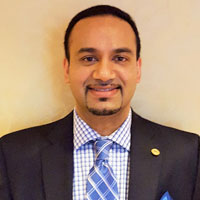 Paul G. Mathew, MD, DNBPAS, FAAN, FAHS completed his neurology residency at Temple University Hospital in Philadelphia, PA, and then completed a fellowship in headache medicine at Mayo Clinic in Rochester, MN. He is board certified in neurology and headache medicine. He is an Assistant Professor of Neurology at Harvard Medical School (HMS), and an Affiliate Member of the HMS Division of Sleep Medicine. He holds clinical positions at Mass General Brigham Health and Harvard Vanguard Medical Associates/Atrius Health.
Paul G. Mathew, MD, DNBPAS, FAAN, FAHS completed his neurology residency at Temple University Hospital in Philadelphia, PA, and then completed a fellowship in headache medicine at Mayo Clinic in Rochester, MN. He is board certified in neurology and headache medicine. He is an Assistant Professor of Neurology at Harvard Medical School (HMS), and an Affiliate Member of the HMS Division of Sleep Medicine. He holds clinical positions at Mass General Brigham Health and Harvard Vanguard Medical Associates/Atrius Health.
He has written over 90 publications, and has presented at both national and international conferences. Dr. Mathew is the Co-Chief Medical Editor of the journal Practical Neurology. He is the current Chair of the American Headache Society Procedural Special Interest Section, Vice-Chair of the Headache and Facial Pain Section of the American Academy of Neurology, and a Member of the Board of the Directors of the National Headache Foundation.
As a graduate of the American Academy of Neurology’s Palatucci Advocacy Leadership Forum, Dr. Mathew applies his passion and expertise to the role of advocate for both patients and fellow physicians. He has participated in multiple successful lobbying efforts in Washington, DC headed by the American Academy of Neurology and The Coalition for Headache And Migraine Patients (CHAMP) to improve patient access to healthcare and research funding. In March, 2015, Dr. Mathew was appointed as the neurology representative on the advisory board of the National Board of Physicians and Surgeons (www.NBPAS.org), and in January, 2019 was appointed Director of Legislative Affairs.
Surgical Management of Trigeminal Neuralgia –
Jeffrey Schweitzer, MD, PhD
This talk will discuss the surgical approach to treatment of trigeminal neuralgia, with an emphasis on correct diagnosis, choice of procedure, and multidisciplinary management. History of surgery for this problem will be reviewed. Correlation between presenting symptoms and expected outcomes, and how these factors relate to choice of intervention, will be emphasized. Etiology of the disease and possibilities for future interventions will be introduced.
Learning Objectives:
1) Distinguish trigeminal neuralgia and its subtypes from other forms of headache and facial pain
2) Understand the criteria for surgical intervention for this problem and how surgery fits into the spectrum of multidisciplinary pain management
3) Identify the three main types of surgical intervention, with advantages and disadvantages of each
4) Identify expected outcomes from surgery
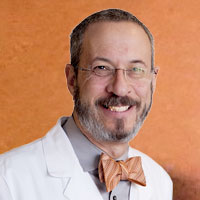 I am an assistant professor of Neurosurgery at MGH and Harvard Medical School. I studied at Harvard from 1975-1986 obtaining AB, MD and PhD degrees, with the latter in Cell and Developmental biology with research involving what would later be known as mesenchymal stem cells. I pursued a residency in Neurosurgery at UCLA and a fellowship at Yale Medical School, with studies in electrophysiology and functional neurosurgery. I was director of the epilepsy, movement disorder and functional neurosurgery program at Kaiser Los Angeles Medical Center from 1999-2012 and was among the pioneers using intraoperative microelectrode recording to guide deep brain stimulation surgery.
I am an assistant professor of Neurosurgery at MGH and Harvard Medical School. I studied at Harvard from 1975-1986 obtaining AB, MD and PhD degrees, with the latter in Cell and Developmental biology with research involving what would later be known as mesenchymal stem cells. I pursued a residency in Neurosurgery at UCLA and a fellowship at Yale Medical School, with studies in electrophysiology and functional neurosurgery. I was director of the epilepsy, movement disorder and functional neurosurgery program at Kaiser Los Angeles Medical Center from 1999-2012 and was among the pioneers using intraoperative microelectrode recording to guide deep brain stimulation surgery.
I resumed my academic career in 2018, returning to MGH and HMS with a team developing autologous stem cell-derived therapy for Parkinson’s disease, as published in the New England Journal of Medicine in 2020. I founded MGH’s multidisciplinary facial pain clinical program including its first radiosurgical treatment program and new focused ultrasound program. Author of over 50 publications and reports in these fields, I have lectured on these topics both nationally and internationally.
I currently hold the George A. Lopez, MD Endowed Chair in Neurosurgery at MGH.
Sleep Deficiency and Chronic Pain: Potential Underlying Mechanisms and Clinical Implications – Monika Haack, PhD
There is growing evidence that insomnia increases the risk for the development of a wide range of chronic pain disorders. Sleep disturbances are known to disrupt multiple biological systems with predominantly analgesic or hyperalgesic properties, which have the potential to mechanistically link sleep disturbances with chronic pain. There is a need to enhance awareness of this relationship and its underlying mechanisms, given the clinical implications of this relationship on treatment decisions to better manage chronic pain in the presence of sleep disturbances.
1. Recognize that sleep disturbance increases the risk for developing chronic pain disorders.
2. Understand the impact of sleep disturbance on systems with analgesic and hyperalgesic properties.
3. Recognize the research opportunities and clinical implications of the relationship between sleep and chronic pain.
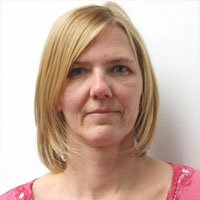 Dr. Haack is Associated Professor of Neurology at Harvard Medical School. She received her PhD at the Max Planck Institute for Psychiatry in Munich, Germany, with a focus on the interactions between sleep and the immune system. Her research goals are directed at discovering the mechanisms involved in the relationship between sleep deficiency and disease risk, in particular chronic pain, with a focus on pro/-counter-inflammatory and central pain modulatory pathways. She is testing mechanistic pathways by using complex and lengthy experimental models of human sleep deficiency that mimic sleep patterns highly common in the general population and in many chronic pain conditions. More recently, she is focusing on differences between women and men in the response to sleep deficiency, in order to better understand mechanisms contributing to the overrepresentation of women in the many diseases characterized by sleep disturbances, immunopathology, fatigue, and pain.
Dr. Haack is Associated Professor of Neurology at Harvard Medical School. She received her PhD at the Max Planck Institute for Psychiatry in Munich, Germany, with a focus on the interactions between sleep and the immune system. Her research goals are directed at discovering the mechanisms involved in the relationship between sleep deficiency and disease risk, in particular chronic pain, with a focus on pro/-counter-inflammatory and central pain modulatory pathways. She is testing mechanistic pathways by using complex and lengthy experimental models of human sleep deficiency that mimic sleep patterns highly common in the general population and in many chronic pain conditions. More recently, she is focusing on differences between women and men in the response to sleep deficiency, in order to better understand mechanisms contributing to the overrepresentation of women in the many diseases characterized by sleep disturbances, immunopathology, fatigue, and pain.
She is Associate Preceptor of the T32 Program in Sleep, Circadian, and Respiratory Neurobiology, received the HMS excellence in Tutoring Award, and is continuously mentoring and training undergraduate/graduate students, postdoctoral fellows, and instructors joining her research program.
Sleep Pathophysiology and The Role of Orthognathic Surgery in the Treatment of Sleep Apnea –
Edward Lahey, DMD, MD, FACS
Sleep Pathophysiology and The Role of Orthognathic Surgery in the Treatment of Sleep Apnea
1. Familiar with the physiology of sleep
2. Describe sleep architecture and explain the consequences of sleep loss
3. Define Sleep Disordered Breathing (SDB) and Obstructive Sleep Apnea (OSA)
4. List components of an OSA evaluation for maxillofacial surgery
5. Understand the current surgical evidence
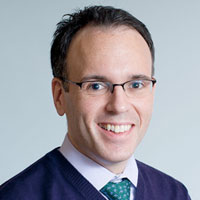 Dr. Edward Lahey hails from Connecticut, where he received his undergraduate degree from Fairfield University. He received his DMD, summa cum laude, from Tufts University School of Dental Medicine and then completed the year-long Clinical Research Training Program at the National Institutes of Health in Bethesda, Maryland. Following his clinical research fellowship, Dr. Lahey obtained his MD from Harvard Medical School while completing his residency in oral and maxillofacial surgery at Massachusetts General Hospital.
Dr. Edward Lahey hails from Connecticut, where he received his undergraduate degree from Fairfield University. He received his DMD, summa cum laude, from Tufts University School of Dental Medicine and then completed the year-long Clinical Research Training Program at the National Institutes of Health in Bethesda, Maryland. Following his clinical research fellowship, Dr. Lahey obtained his MD from Harvard Medical School while completing his residency in oral and maxillofacial surgery at Massachusetts General Hospital.
In 2006, Dr. Lahey joined the oral and maxillofacial surgery faculty at Massachusetts General Hospital (MGH) where he remained through 2021. He served as Medical Directory and Quality and Safety Chairman for the department and served on many committees for the hospital. While at MGH, Dr. Lahey developed a research-oriented practice focused on surgical treatment of jaw abnormalities, wisdom teeth, dental implants, obstructive sleep apnea, as well as salivary gland pathology, focusing on minimally invasive techniques. Dr. Lahey holds an appointment at Harvard School of Dental Medicine where he lectures to dental students and is a member of the admissions committee.
Dr. Lahey is a diplomate of the American Board of Oral and Maxillofacial Surgery (ABOMS) and serves as a board examiner for ABOMS. He additionally sits on the executive committee of the Massachusetts Society of Oral and Maxillofacial Surgery and has served as a member of the Massachusetts Chapter of the American College of Surgeons Committee on Applicants.
Phenotyping for OSA and Role of Hypoglossal Stimulation –
Phillip Huyett, MD
During this presentation, we will review the anatomic sites and pathophysiologic mechanisms contributing to obstructive sleep apnea (phenotyping/endotyping) including current diagnostic modalities.
We will additionally cover the basics of hypoglossal nerve stimulation as a treatment for obstructive sleep apnea.
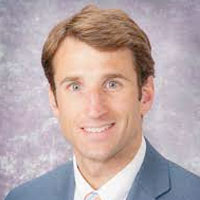 Dr. Phillip Huyett is a board-certified otolaryngologist with specialized training in sleep medicine and surgery. His primary clinical interest lies in providing comprehensive care to patients with obstructive sleep apnea (OSA) and snoring. His training consists of a residency in otolaryngology–head and neck surgery at the niversity of Pittsburgh Medical Center followed by fellowship training in sleep medicine, which incorporated advanced surgical interventions for OSA, at University of Southern California.
Dr. Phillip Huyett is a board-certified otolaryngologist with specialized training in sleep medicine and surgery. His primary clinical interest lies in providing comprehensive care to patients with obstructive sleep apnea (OSA) and snoring. His training consists of a residency in otolaryngology–head and neck surgery at the niversity of Pittsburgh Medical Center followed by fellowship training in sleep medicine, which incorporated advanced surgical interventions for OSA, at University of Southern California.
He currently serves as the Director of Sleep Surgery at Massachusetts Eye and Ear.
Clinical Pearls and Pitfalls in Dental Sleep Medicine: Clinical Case-Based Seession – Amrittej Virk, BDS, DMD
The presentation will cover the detailed screening protocol for proper case selection for oral appliance therapy for the management of OSA. It will cover a review of baseline sleep study and look beyond AHI, thorough review of patient medical history and medications which can potentially determine the success of oral appliance therapy.
Learning objectives:
TMD/OFP exam prior to the start of oral appliance therapy.
Review of sleep study – looking beyond AHI.
Developing a team-based approach with treating physicians to manage co-morbid sleep conditions (insomnia, PLMs etc.)
Medical insurance review to ensure proper coverage of oral appliance therapy.
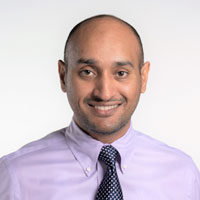 Dr. Amrittej Singh Virk earned his Doctor of Medicine in Dentistry degree with honors from University of Pennsylvania school of dental medicine, Philadelphia along with a selective certificate in Integrative Pain Management.
Dr. Amrittej Singh Virk earned his Doctor of Medicine in Dentistry degree with honors from University of Pennsylvania school of dental medicine, Philadelphia along with a selective certificate in Integrative Pain Management.
He has completed externship in Orofacial pain at Massachusetts general hospital in Boston followed by 2-year residency program in Orofacial Pain and dental sleep medicine at UCLA school of dentistry, Los Angeles under the mentorship of Dr Robert Merrill serving as chief resident during his residency. He has earned Fellowship in the American Academy of Orofacial Pain and is Board certified by American Board of Orofacial Pain. Since 2018, Dr. Virk has maintained a private practice devoted to Orofacial pain management, as well as dental sleep medicine.

![]() American Academy of Orofacial Pain is an ADA CERP Recognized Provider. ADA CERP is a service of the American Dental Association to assist dental professionals in identifying quality providers of continuing dental education. ADA CERP does not approve or endorse individual courses or instructors, nor does it imply acceptance of credit hours by boards of dentistry. American Academy of Orofacial Pain designates this activity for continuing education credits.
American Academy of Orofacial Pain is an ADA CERP Recognized Provider. ADA CERP is a service of the American Dental Association to assist dental professionals in identifying quality providers of continuing dental education. ADA CERP does not approve or endorse individual courses or instructors, nor does it imply acceptance of credit hours by boards of dentistry. American Academy of Orofacial Pain designates this activity for continuing education credits.
